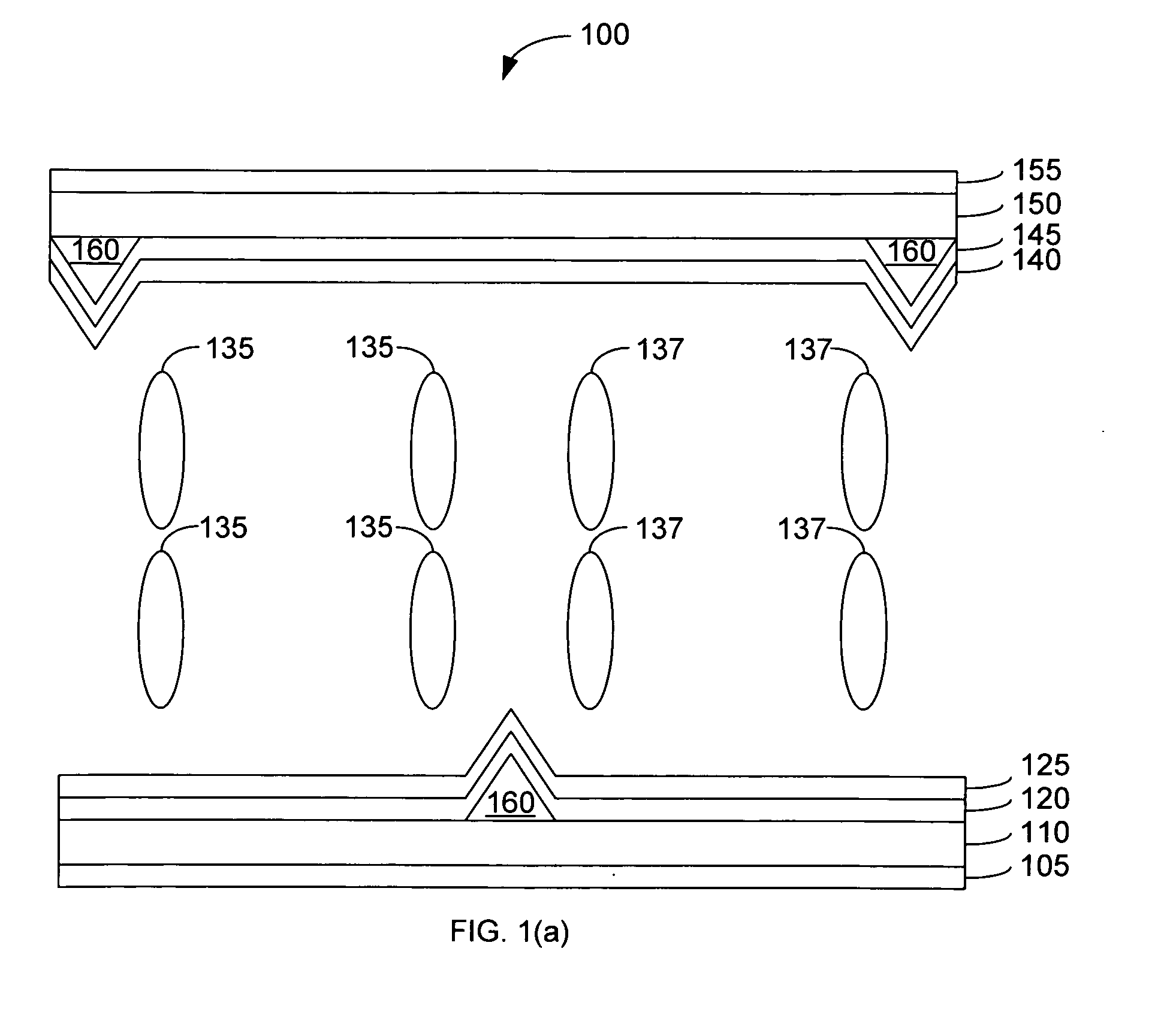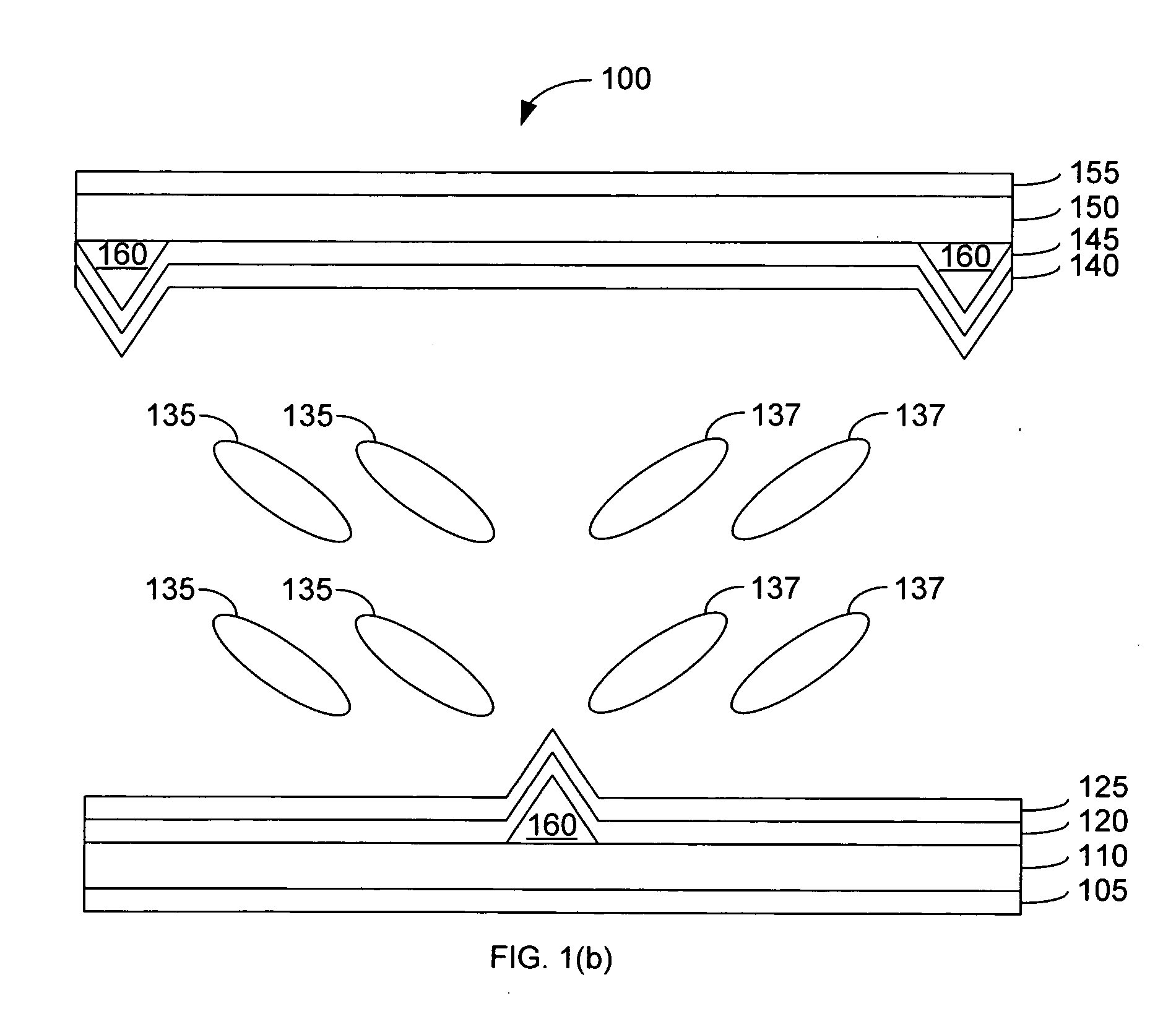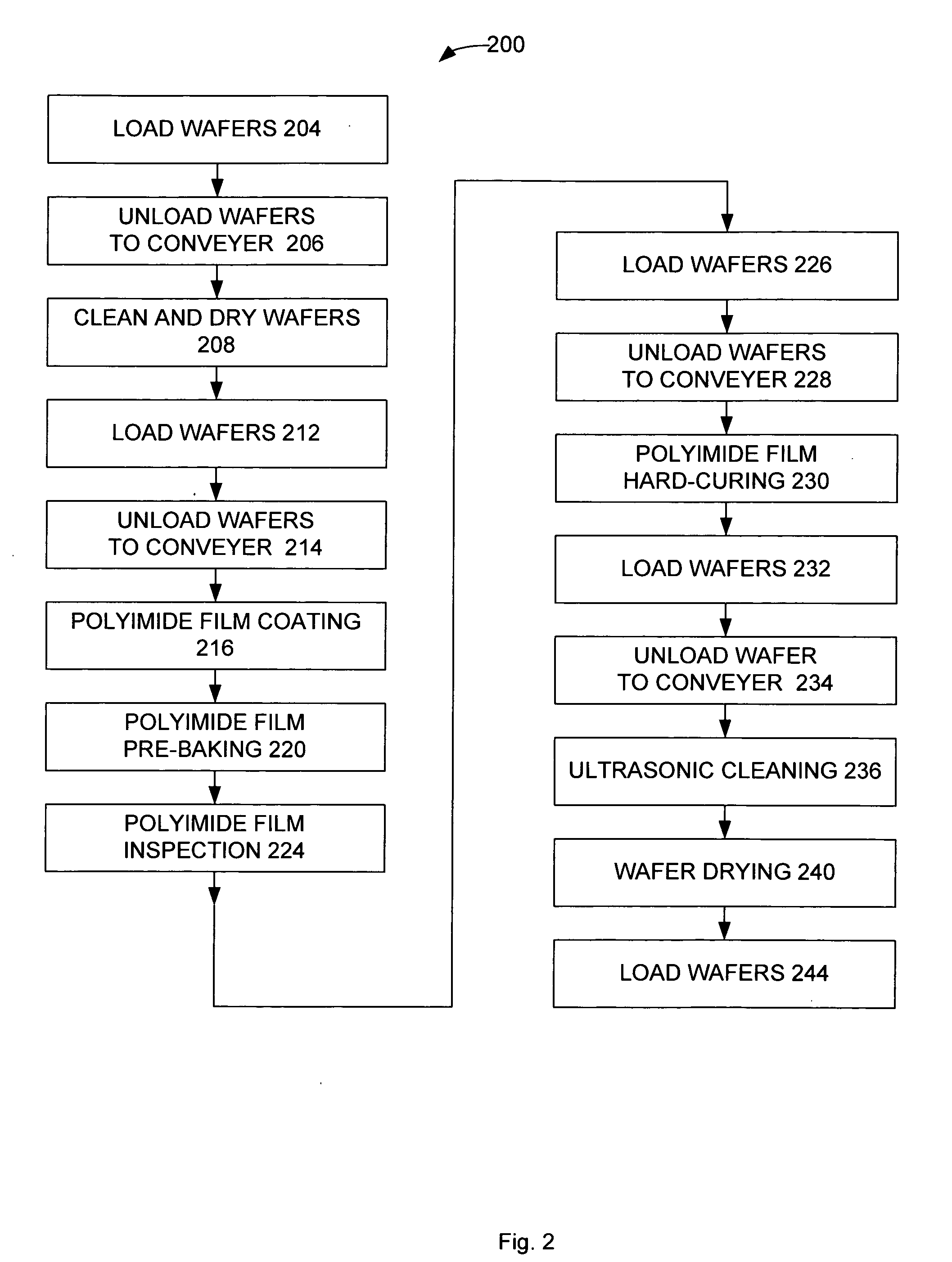Thin organic alignment layers with a batch process for liquid crystal displays
a liquid crystal display and organic alignment technology, applied in the field of thin organic alignment layers with a batch process, can solve the problems of high cost of manufacturing lcds, low contrast ratio, narrow viewing angle, etc., and achieve the effects of reducing the chance of contamination, reducing the voltage drop across the alignment layer, and excellent materials
- Summary
- Abstract
- Description
- Claims
- Application Information
AI Technical Summary
Benefits of technology
Problems solved by technology
Method used
Image
Examples
Embodiment Construction
[0021]FIG. 2 is a process flow diagram of a conventional process 200 to form an alignment layer in a multi-domain vertically aligned liquid crystal display. Conventional process 200 requires the use of several different machines such as, wafer cleaning machine, a polyimide coating machine, a polyimide pre-curing oven, a polyimide post curing oven, an ultrasonic cleaning machine, and multiple loading / unloading machines. In the fabrication process, multiple wafers, which contain one or more substrates for LCDs, are loaded into cassettes, which are then placed in the machines for processing.
[0022] In LOAD WAFERS 204, wafers are loaded into a “cassette” and placed in a first loading / unloading machine. In UNLOAD WAFERS TO CONVEYER 206, the first loading / unloading machine unloads the wafers from the cassette and places them on a conveyer for the wafer-cleaning machine. The cleaning machine then cleans and dry the wafers serially in CLEAN AND DRY WAFERS 208. The wafers are then loaded in ...
PUM
| Property | Measurement | Unit |
|---|---|---|
| temperature | aaaaa | aaaaa |
| temperature | aaaaa | aaaaa |
| pressure | aaaaa | aaaaa |
Abstract
Description
Claims
Application Information
 Login to View More
Login to View More - R&D
- Intellectual Property
- Life Sciences
- Materials
- Tech Scout
- Unparalleled Data Quality
- Higher Quality Content
- 60% Fewer Hallucinations
Browse by: Latest US Patents, China's latest patents, Technical Efficacy Thesaurus, Application Domain, Technology Topic, Popular Technical Reports.
© 2025 PatSnap. All rights reserved.Legal|Privacy policy|Modern Slavery Act Transparency Statement|Sitemap|About US| Contact US: help@patsnap.com



